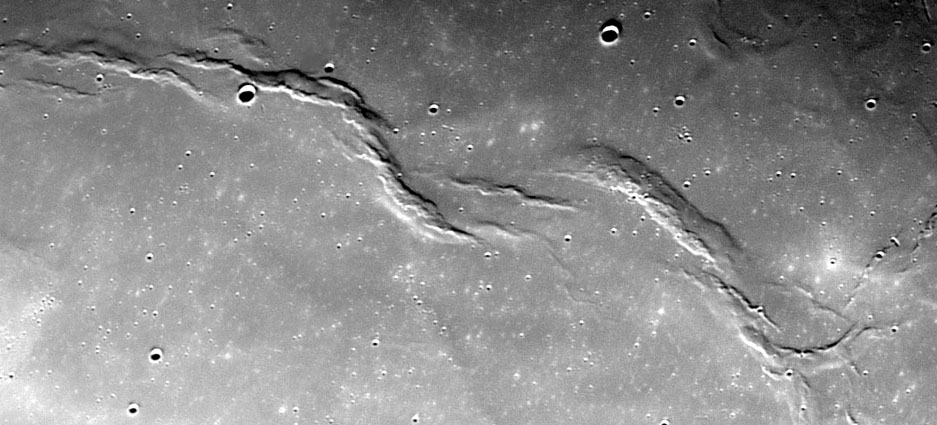Difference between revisions of "November 17, 2004"
| Line 53: | Line 53: | ||
</table> | </table> | ||
<p> </p> | <p> </p> | ||
| − | + | {{wiki/ArticleFooter}} | |
| − | |||
| − | |||
| − | |||
| − | |||
| − | |||
| − | |||
| − | |||
| − | |||
| − | |||
| − | |||
| − | |||
Revision as of 19:09, 1 February 2015
A Glorious Serpentine Ridge
Image Credit: Bruno Daversin |
|
A Glorious Serpentine Ridge One of the most wondrous lunar sights can be observed when the Moon is 6 days old. Paralleling the eastern shore of Mare Serenitatis is the snakelike Serpentine Ridge. This fine name has been around since Schroeter (1790s), but the IAU, in their woeful ignorance of history and selenology, gave different parts of this obvious single structure two unnecessary names: Dorsum Smirnov and Dorsum Lister. Bruno Daversin's exquisite image reveals both the broad and detailed structure of this wrinkle ridge system. Mare ridges generally have a a wide swelling with one edge being steeper-sided and higher. This can be well seen near the crater Very (large crater near the upper left). From LTO 42B3 (1.6mb) we can see that the broad part of the ridge rises as much as 200 m over a horizontal distance of 4-5 km, but the steep part of the ridge rises 200 m higher in a distance of a little less than a kilometer. At the southern end of the ridge there is a strongly curved arc that looks almost like a crater rim. And unlike the rest of the ridge, this arc has its tall side on the eastern edge of the broad structure. I don't know what that means, but it is different. Near the top right corner of this scene (near the crater Borel) is a lower ridge system that may actually be a ghost crater - i.e. ridges marking a lava covered crater. Other images of the area show that the ridge continues as almost a full circle. In general, Serenitatis must be deep for few partially flooded craters exist there, but it makes since that this may be one because it is on the shallow outer bench of the mare. Technical Details: Related Links: Yesterday's LPOD: LTOs Are Here! Tomorrow's LPOD: Another Gander at Neander - Its Not My Fault |
|
Author & Editor: Technical Consultant: Contact Translator: A service of: |
COMMENTS?
Register, Log in, and join in the comments.




